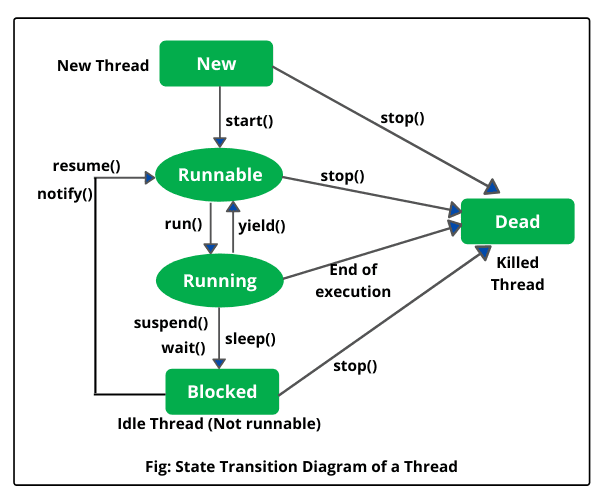先回顾Java里的几个方法
先了解下Java跟线程相关的几个方法是sleep、yield、wait、join,为什么会有这么些个方法,这些方法是要解决什么问题?
直观区别:
1
2
3Object里的相关的方法:wait()和notify()、notifyAll()
Thread类的静态方法: Thread.sleep(long) 和Thread.yield()
join():是由线程对象来调用。Object.wait()和Thread. sleep()的关键的区别在于
1 | wait()是用于线程间通信的,而sleep()是用于短时间暂停当前线程 |
Thread.sleep(long) 和Thread.yield() 区别
1
2sleep()会让当前线程休眠进入阻塞状态并释放CPU。 方法会给其他线程运行的机会,而不考虑其他线程的优先级,因此会给较低线程一个运行的机会,如果有同步锁则sleep不会释放锁即其他线程无法获得同步锁 可通过调用interrupt()方法来唤醒休眠线程
yield()让出CPU调度 。方法只会给相同优先级者更高优先级的线程一个运行的机会。调用yield方法只是一个建议,告诉线程调度器我的工作已经做的差不多了,可以让别的相同优先级的线程使用CPU了,没有任何机制保证采纳。join:一种特殊的wait, thread.join(),用于保持线程的执行顺序。当前运行线程调用另一个线程的join方法,当前线程进入阻塞状态直到另一个线程运行结束等待该线程终止。 注意该方法也需要捕捉异常。
##Java 线程声明周期
NEW : A thread that has not yet started is in this state.
RUNNABLE: A thread executing in the Java virtual machine is in this state.
BLOCKED: A thread that is blocked waiting for a monitor lock is in this state.
WAITING: A thread that is waiting indefinitely for another thread to perform a particular action is in this state. 比如:ThreadA调用了Object.wait()方法,此时ThreadA状态为WAITING。ThreadA会等待其他的线程调用 Object.notify()或Object.notifyAll才会被唤醒,继续执行后面的逻辑
TIMED_WAITING: A thread that is waiting for another thread to perform an action for up to a specified waiting time is in this state. 线程正在等待其他线程的操作,直到超过指定的超时时间,线程在调用以下方法是会将状态改变为TIMED_WAITING状态:
1
2
3
4
5Thread.sleep
Object.wait with timeout
Thread.join with timeout
LockSupport.parkNanos
LockSupport.parkUntilTERMINATED: A thread that has exited is in this state.

